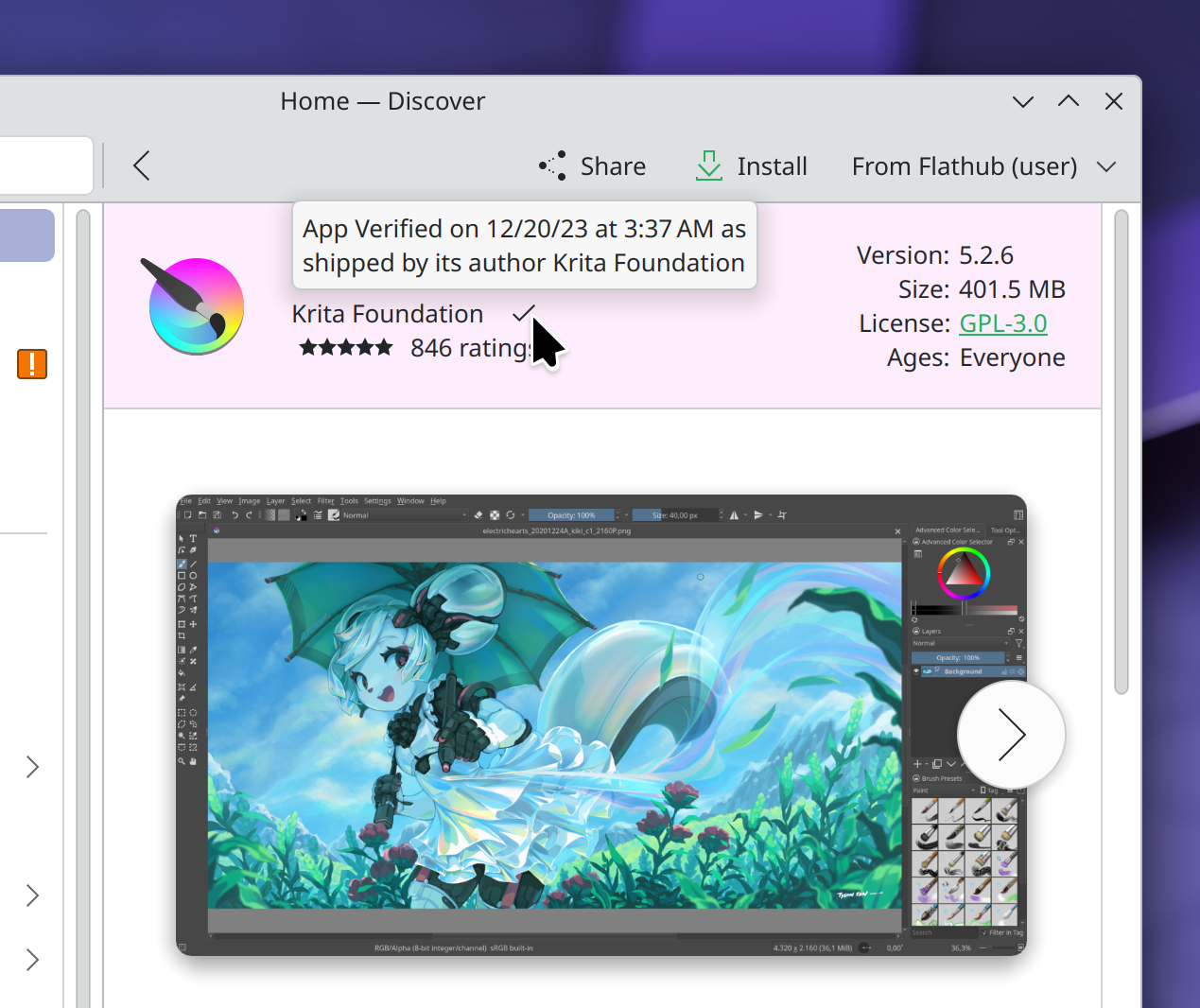Konsole, because it fits in nicely with Plasma (as you would expect) and does everything I need a terminal to do.
- 61 Posts
- 450 Comments
That’s never stopped them before.

 4·6 days ago
4·6 days agoPlasma 6 was released in Feb 2024, 6.4 is about due. I suspect 7 won’t happen until Plasma and applications need to be ported to Qt 7.
I think Nvidia drivers are the only real pain point left.
Nvidia drivers pretty much just work now, even on Wayland. On the rare occasion they don’t, it can be a pita to sort out though.
The only person you’re spiting is yourself.
It also says cake day underneath the 2 years ago, or at least I see it on the web client.
It’s not the end of “it doesn’t work on Wayland”, just the end of an alternative that does work in such circumstances. That said, since explicit sync was merged into the Nvidia drivers, I’ve had no problems with Wayland / Plasma.
Probably activity monitor is counting buffers and caches which btop isn’t.

 3·13 days ago
3·13 days agoWith Manjaro, you can solve a lot of the problems by switching to the “unstable” repositories, which mirror the Arch repositories. It doesn’t solve the problems with their processes though. There are still better Arch based distros, like EndeavourOS.
It’s funny, I update Endeavour daily because there’s less to go wrong at a given point
Dotfiles are files whose name starts with a dot. Configuration files are called dotfiles because they used to start like that and litter your home directory. These days configuration files tend to live under the .config folder. The name has stuck though.
Yeah I know. You’d think it would be bang up to date, but that wasn’t the case. I think it has been updated now though.
I used to distro hop all the time until I settled on Tumbleweed. I used that for eight years until Suse bared their corporate teeth and I got fed up with being two generations behind on the Nvidia drivers. I’ve been using EndeavourOS for almost a year and don’t see me moving any time soon.
How else are they going to get you to buy a support contract. If it was easy, you wouldn’t need it.

 3·20 days ago
3·20 days agoNobody expects bash to be remotely sane!

 6·28 days ago
6·28 days agoI love Eclipse for Java and QtCreator for C++/Qt. Eclipses auto-complete switched between psychic and psychotic at times but its integration with tools such as git and gradle is second to none. I never drunk the Jetbrains koolaid.

 1·1 month ago
1·1 month agoHave a look at this Udemy course, it teaches the HTML coding and website design. They have a sale on the moment too.
I first experimented with Linux in 1999, but didn’t stay with it for long as I never got X11 working. I started using it more seriously in 2001 / 2002 and by the time Windows XP was established, I was a full time Linux user. I was a lot older than you though being in my mid-thirties.
It offers a good installer, a decent out of the box setup, useful helper scripts, and a helpful community. That’s a lot more than Arch!







Found the Java programmer…